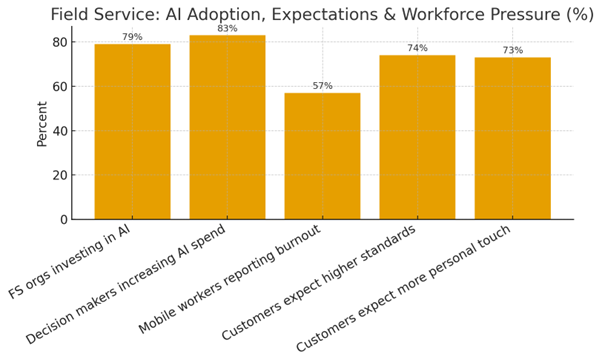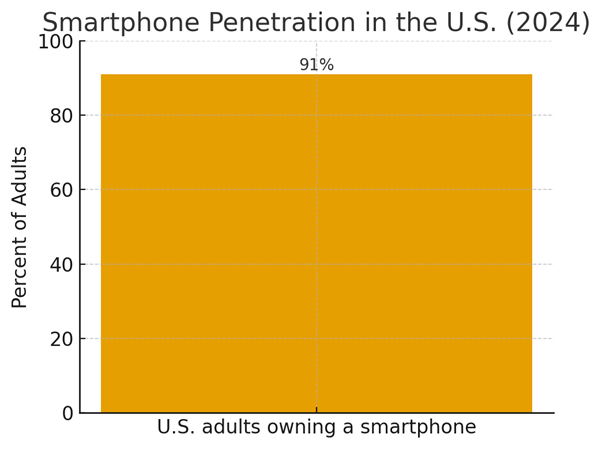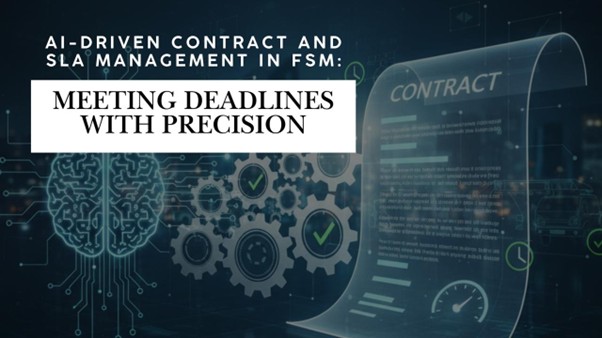Voice Technology in Field Service: Hands-Free Operations for Mobile Technicians

Imagine a technician balancing on a utility pole or repairing a wind turbine in stormy conditions. Their iPad buzzes with information about their jobs, but it is unsafe and impractical to pause and scroll. Her voice assistant simply issues a command to open up the next work order, write a diagnostic remark, or confirm parts inventory—all hands-free—instead of stumbling through menus or typing while wearing dirty gloves.
This is where operations are transformed by hands-free voice technology. 75% of field service firms are expected to employ voice and mobile augmented reality technology by 2026 to enable technicians who are always on the road, according to Gartner. McKinsey also notes that by executing tasks more quickly and with fewer mistakes, hands-free solutions can increase technician productivity by as much as 20%.

In field service, this compression is evident as technicians, frequently on ladders or in vaults, balance client updates, safety, diagnostics, and compliance as leaders strive for cost curves, uptime, and SLAs. The moment is ripe for voice assistants in FSM to remove friction. With 91% of U.S. adults owning a smartphone, the interface is already in every pocket; the question is how to harness it for hands-free field operations at scale and with accountability.
“Thirty years of change is being compressed into three years.” — says Satya Nadella, Microsoft Chairman & CEO. In field service, that democratisation takes the form of voice assistants in FSM, enabling mobile technicians to work smarter, safer, and faster — without lifting a finger. For service providers like FieldEZ, this scenario isn’t science fiction. In other words, voice-enabled field service is already on their roadmap. The real question for CEOs and CTOs is when and how to harness this potential.
Why voice, why now?
Two secular waves are converging,
- First, the speech & voice recognition market is on a steep climb (>$14B in 2024, projected near $60B by 2032), driven by on-device models, better noise handling, and enterprise integrations.
- Second, field service leaders are leaning hard into AI: 79% of field service organisations are already investing in AI and 83% of decision-makers plan to increase that spend next year—a signal that voice-led automation is crossing the chasm from pilots to platforms.
Salesforce’s research also surfaces the operational pressure that voice can relieve: 74% of mobile workers say customer expectations are higher, and 73% say customers now expect a personal touch; meanwhile, 57% report burnout—often fueled by admin overhead and avoidable escalations.
Why Hands-Free Matters in Field Service
Field service management (FSM) has always been about mobility — but traditional tools (laptops, tablets, even mobile apps) still demand manual interaction. For technicians in high-risk or hands-on environments, this slows productivity and increases safety hazards. Statistically, the business case is clear. Adoption of voice assistants is already widespread. Gartner predicted that by 2021, roughly 25% of workers would use voice technology daily, and consumer usage has exploded even faster.
As of 2025, there are about 8.4 billion voice assistant instances in use worldwide — more than the human population. In practice, this means most technicians already carry a voice interface: roughly 77% of Americans own smartphones equipped with voice assistants like Siri or Google Assistant. In the field-service context, that ubiquity is an opportunity.

Not surprisingly, field technicians already see the benefits: in a recent industry study, 80% of technicians agreed that mobile field-service apps significantly improve their productivity. In practice, voice adds a new layer to that mobility by letting technicians update jobs and retrieve information without lifting a finger. For example, Aberdeen Group data shows that real-time data access (e.g. via mobile apps) can boost first-time fix rates by 18%. By eliminating the keyboard, voice promises to take efficiency even further.
Traditional vs. voice-enabled field operations (what changes, what to measure)
Domain | Traditional FSM | Voice-Enabled FSM (with FieldEZ) | KPI to Track |
Job logging | Typed after job; error-prone | Real-time voice capture, auto-tagged to asset/work order | Minutes saved/job; warranty dispute rate |
Escalation | Phone trees; long holds | Voice intent → protocol + expert in minutes | |
Knowledge access | Manual search, app-hopping | Conversational retrieval; unified knowledge | |
Scheduling | Central re-rosters via calls | Field voice updates with SLA/skills awareness | Same-day completion; on-time arrival |
Workforce wellness | High admin burden | Lower cognitive load; fewer after-hours logs |
What executives should demand from a voice-enabled FSM rollout
Leaders don’t buy features—they buy outcomes. Use a two-speed plan: quick wins in weeks, and platform shifts over quarters.
Quick wins (30–90 days)
- Voice-first logging on top 5 job types → target 10–15 minutes saved per job; verify with time-and-motion.
- Voice-triggered escalation playbooks for rare faults → aim for >70% reduction in time-to-expert versus baseline.
Customer ETA & updates by voice → benchmark CSAT/NPS lift on jobs with proactive comms.
Platform moves (1–3 quarters)
- Unified knowledge via conversational AI (internal + OEM sources) → track first-time fix (FTF) rate and warranty claim accuracy.
- Skill-aware, SLA-aware voice scheduling → monitor same-day completion and windshield time deltas from baseline.
Predictive vs. Prescriptive Analytics: Key Differences
Selecting your field service strategy requires knowledge about the distinct features of predictive and prescriptive analytics.
Feature | Predictive Analytics | Prescriptive Analytics |
Core Function | Forecast future events | Recommend future actions |
Tech Backbone | AI/ML, statistical models | Optimization engines, AI |
Decision Support | When will it fail? | What’s the best decision to take? |
Relevance in Field Service | Preventive maintenance, forecasting | Route optimization, SLA management |
While both approaches use data to drive decisions, predictive analytics focuses on foresight, whereas prescriptive analytics offers actionable guidance—together, they create a powerful combination for service excellence.
The FieldEZ Advantage: Hands-Free FSM in Action
FieldEZ’s approach mirrors what top teams want from voice assistants in FSM: no extra devices, minimal retraining, and fast tie-ins to scheduling, inventory, and work orders. Its mobile-first, low-code design already empowers field teams to customize workflows — now extended with hands-free capabilities that integrate with AI voice assistants. Think: “Open exception screen; preload part HVB-22; confirm quantity three”—then let the system push the keystrokes and form entries under the hood. That mirrors best-in-class device-based voice automation seen across warehousing and manufacturing, but tuned for field realities.
Key capabilities include:
- Morning Briefing: Technicians receive AI-generated job summaries via voice, including asset history, warranty status, and service notes.
- On-Site Diagnosis: Instead of toggling through records, they ask: “Why isn’t this turbine producing energy?” Voice AI queries the knowledge base instantly.
- Repair Phase: Voice-driven step-by-step guidance allows hands to stay on tools, reducing task time.
- Inventory Check: Technicians ask, “Do I have a replacement part in van stock?” — answered instantly.
- Closing the Job: With voice dictation, reports are completed onsite, saving up to 15 minutes per task (Source: Field Service News).
This hands-free cycle is not just about efficiency — it’s about giving technicians back time for high-value work while keeping them safe.
Voice Technology and Business Efficiency
Voice assistants in FSM are more than just dictation tools. Several startups and established vendors are rolling out AI-powered voice agents that can actually handle entire conversations with customers or dispatchers. For example,
- Fieldcode’s platform uses voice AI to both answer and place calls — confirming appointments, explaining repair details, or alerting customers that a technician is en route. The call center becomes automated, with conversations logged directly into CRM and the FSM system.
- On the technician side, voice-enabled apps can execute “zero-touch” workflows: saying “job 324 completed” could automatically close the ticket, add time and mileage logs, and even generate an invoice.
Hands-free field operations extend beyond technicians — they reshape the entire service lifecycle:
- Dispatchers use voice AI to reassign urgent jobs within seconds.
- Supervisors pull performance reports hands-free during site visits.
- Customers get faster updates because technicians dictate notes in real-time.
IDC projects that the global voice AI market will reach $30 billion by 2030, with field services among the top adopters. For CEOs and CTOs, investing in voice-driven FSM isn’t optional — it’s the blueprint for future-proof service delivery.

The Road Ahead: AI + Voice = The Technician of Tomorrow
As Sundar Pichai said, “AI is more profound than fire or electricity.” Voice assistants in FSM are evolving rapidly with natural language processing (NLP), generative AI, and IoT integration. Tomorrow’s technician won’t just query data — they’ll converse with AI copilots capable of diagnosing faults, ordering parts, and predicting maintenance needs autonomously. Hands-free operations are no longer a “nice to have” — they’re the defining capability of modern FSM. For mobile technicians, voice technology is freedom: freedom from screens, from errors, and from distractions. For executives, it’s a direct path to safer operations, higher productivity, and better customer loyalty.



